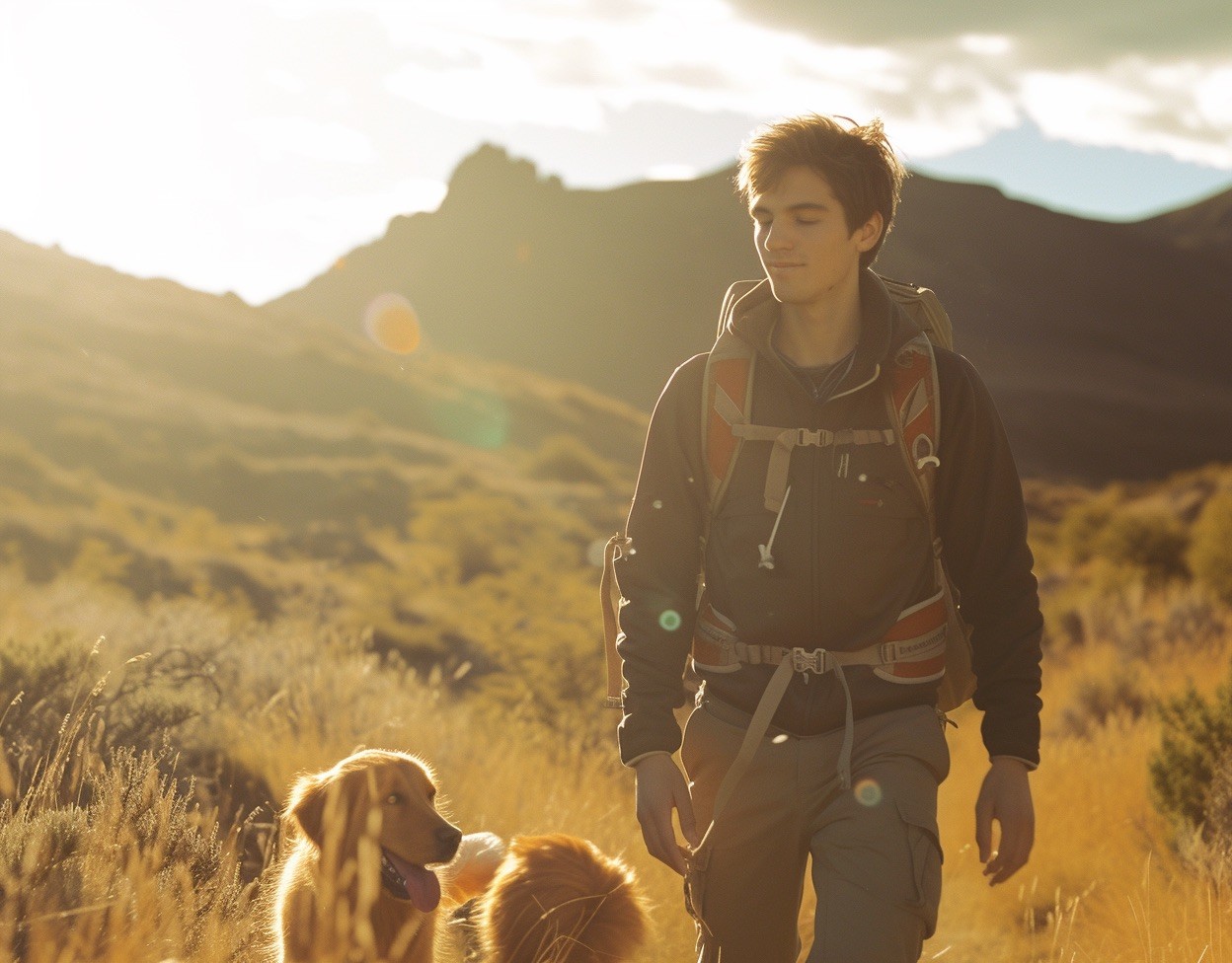Rucking with Dogs & Other Animals
Workout
The Joys and Challenges of Animal Companion Rucking
Having your furry friend along on your ruck march can be rewarding for both pet and owner. However, conditioning animals to walk long distances while carrying weight requires patience, planning, and care. We have already written about rucking with pets in the past, but given the topic's popularity at Ruckliving, we decided to cover additional information. Here are some additional items we think you should consider.
Assessing Individual Animal Ability
Before strapping on any packs, carefully consider your pet's age, fitness level, joint health, paw pad condition, and temperament. Gauge their normal walking pace and endurance by taking them on gradually longer leash walks over different terrains. Let their comfort be your guide. Test weight tolerance with empty packs first before adding gear.
Proper Gear Matters
Use well-fitted harnesses designed for load bearing instead of collars, which can restrict breathing. Choose packs and add-on pouches sized appropriately for your pet's torso length. Distribute lighter loads over more attachment points to prevent strain. Regularly check for signs of chafing. Allow your companion to adjust to wearing gear for short periods before attempting any distance.
Building Distance Slowly
Start with flat, softer surfaces like grass or dirt trails before progressing to rougher or hillier ground. Keep early sessions short, even just five minutes. Let your pet set the pace instead of pulling them along. Increase duration and complexity week-by-week to develop stamina. Know when to call it a day. Setting incremental goals will make training more structured while allowing time for conditioning.
Consistency and Positive Reinforcement
Frequent, shorter training sessions with ample praise and treats will make progress more enjoyable. Maintain realistic expectations - a Chihuahua will never keep pace with a Husky. Celebrate small wins and be prepared to dial things back if problems arise. Patience is key, as is keeping training positive through incentives. Push too hard or fast and you may lose ground.
Proper Rest and Recovery
Pay close attention following any ruck march, when endorphins wear off and soreness can set in. Provide ample water, nutritional food, joint supplements if needed, and time for unstructured rest. Massage paws, stretch gently, and monitor for limping or changes in behavior. Just as conditioning occurs gradually, so should recovery, by letting your companion take the lead on activity levels following exertion.
Signs of Overexertion
Trouble breathing, limping, unwillingness to continue, hiding, vomiting, diarrhea, and other marked changes in behavior can indicate overexertion or injury. End activity immediately and call your vet if symptoms persist. Prevention through gradual training is always best. Listen closely and observe your pet during every outing, erring on the side of caution at the first sign of struggle.
Proper Hydration and Nutrition
Ensure ample fresh water before, during, and after activity. Bring a collapsible bowl and extra water on longer treks. Feed a high-protein diet formulated for active or working breeds. Monitor treat intake which can upset digestion. Muscle strains happen less when properly fueled. Proper nutrition enables conditioning while helping prevent injury - don't cut corners on food quality or portions.
Mind the External Elements
Extreme heat, cold, and inclement weather can negatively impact pets faster out on the trail. Know your pet's limits and when to seek shelter versus powering through. Use protective paw wax, dog shoes, or jackets as needed. Pack emergency first aid, including a space blanket. Regularly check paws for injuries that are harder to detect while moving. Carry a first aid kit and know basic field treatment for cuts, strains, or snake bites.
Bonding and Fun for All
A well-trained ruck companion can be a wonderful adventure partner outdoors. They will thrill in new sights and smells, in bounding over obstacles, and just being with their beloved human. Achieving a goal together builds an even stronger bond. Just take things at their pace. The joy of the journey can get lost in rigid expectations. Allowing your pet to explore and engage on their terms makes the experience more mutually rewarding.
Listen and Empathize
Focus on your animal's needs and limitations, not arbitrary distance or weight goals which can lead to harm. Let your pet communicate their comfort level through behavior and demeanor. Empathize instead of pushing past their limits. Patience and compassion must override personal ambitions or comparisons to other animals. Meet them where they are at.
Gradual Progression Prevents Injury
Conditioning takes months, not weeks. Progress too rapidly and you risk physical and psychological damage. Increase difficulty and distance no more than 10 percent at a time. Two steps forward and one step back are perfectly acceptable to promote musculoskeletal development while avoiding damage. Temporary setbacks keep longer-term goals achievable.
The Takeaway
While having your pet carry gear across miles of terrain may seem exciting, conditioning animals requires great care and restraint. Assess your companion's individual capability. Invest in proper specialized gear. Build distance and difficulty slowly, with consistency, positivity and proper rest. Let your pet's comfort and safety guide the adventure. Done right, the shared journey will be all the more meaningful. Just be realistic and listen - the rewards come in their own time. Rushing the process risks harming the very relationship you seek to strengthen. Show patience, empathy and compassion and you will both get there.

